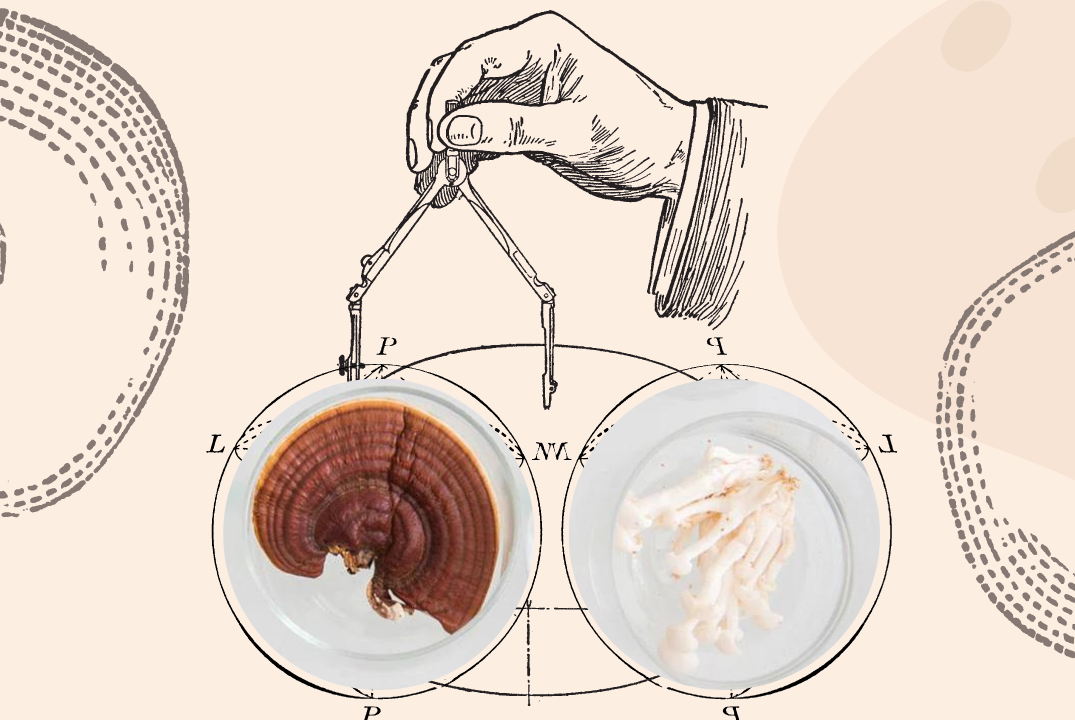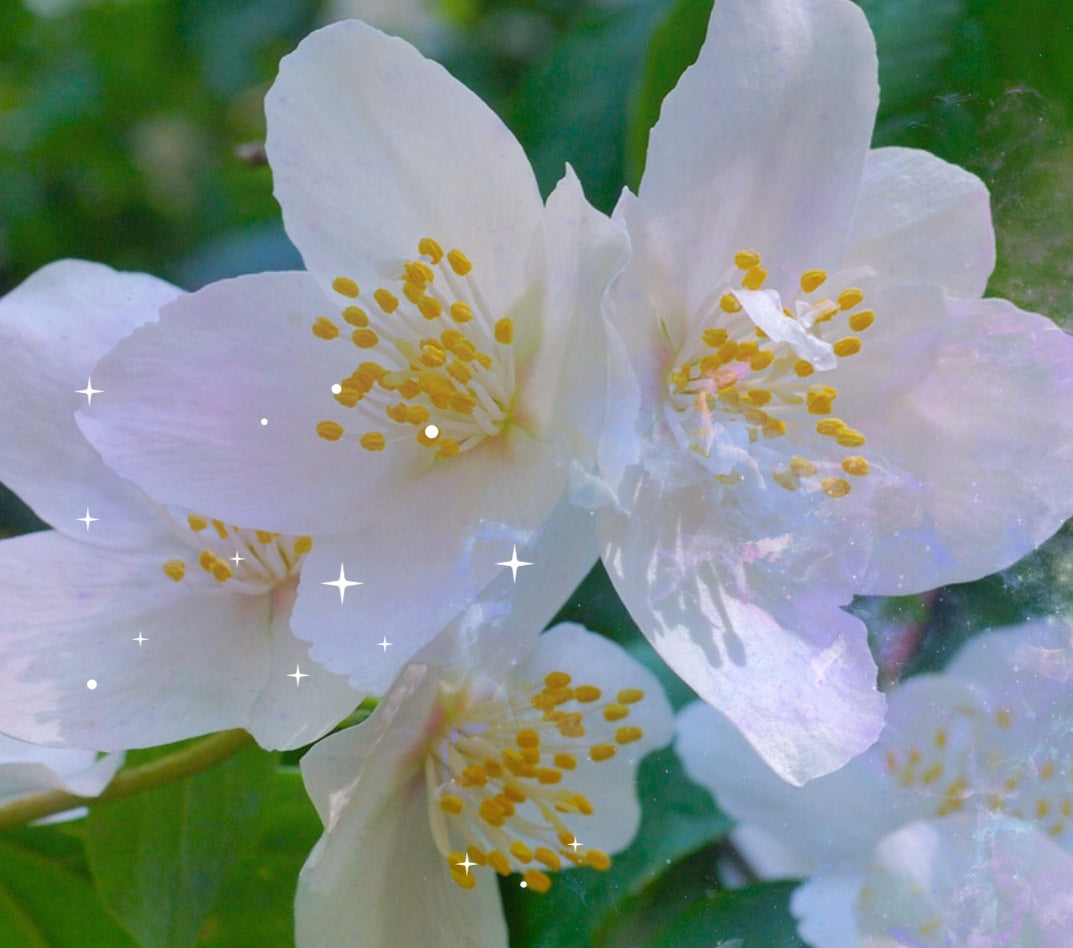All of nature’s seasons bear their own unique gifts, but spring seems to be a special kind of offering from the earth. After the harshness and struggles of winter, we’re even more grateful to receive colorful blooms, baby animals, and fresh, invigorating air—gifts that might even make us forget about the endless weeks of trudging around in the cold. While we might welcome spring with open arms, this season can carry with it an intensity and unpredictability that’s as exciting as it is overwhelming. Taking care to protect our bodies, minds, and hearts from the fluctuations in energy that we experience in spring is one way to ensure that we can receive the gift of this season with our fullest selves and, like nature around us, continue to bloom every time it comes around.
In Ayurveda, seasonal junctures (called rtu sandhi in Sanskrit, which means “seasonal joint”), are treated with special attention because of their tendency toward instability. Like the joints in our skeletons, which are made to be flexible to allow for movement but are also vulnerable when the movement is too intense or too fast, seasonal joints are times when our bodies are most susceptible to injury or disease. The transition between winter and spring is especially jarring, since it moves us between extreme opposites—from the light, dry, mobile qualities of winter, characterized by vata dosha, to the heavy, dense, and wet qualities of spring, characterized by kapha dosha. As the more dense, nourishing foods and qualities that we needed to stay strong in winter start to melt inside and around us, that kapha can cause stagnation or build-up in the channels of the body and mind. At the same time, the physical substance of kapha can block the movement vata, resulting in feelings of restlessness, unsettledness, anxiety, or even itchiness.
The Ayurvedic approach to navigating the changing of the doshic guards involves the one element that balances both vata and kapha: fire. By bringing in steady, clarifying heat through our foods, movement, and self-care practices, we can help facilitate the melting of kapha that happens naturally in this season, and forge strong containers of discipline, or tapas, through which kapha and vata can flow in harmony. Imagine a river running through an open field. Without any kind of banks or edges, the water would pool out all over the place, becoming stagnant and turbid, and making a muddy mess. But with a structure around it, the river maintains its clarity of direction and can flow at a steady pace, nourishing the whole field with a balanced amount of water.
Healthy routines of any kind can be especially useful in spring because they call in the fire element as a means to clarify and illuminate our intentions as well as invite more joy and transformation into our day-to-day lives. Whenever we work with fire in Ayurveda, we are tapping into the energy of agni, or the digestive fire, that helps us break down our food as well as everything we take in through the sense organs. In spring, fire manifests through the increased amount of daylight we receive from the sun, which warms the planet earth we live on and the earth of our bodies. Harnessing the power of the sun outside and inside of you can help to facilitate the powerful “spring cleaning” process that happens in spring through our digestion. It is only with a strong digestive fire that we can tackle the huge energetic shifts happening all around us in spring, and use it to help us break through the seeds that protected us in winter and bloom like the flowers we all are.
The practices and recipes below are all ways to stay steady and balanced in spring with a special interest in maintaining agni through our diet and lifestyle. By supporting healthy digestion and elimination, we can feel more agency in deciding which parts of our lives are worth our attention at present, and which parts are no longer serving us and are ready to be cleared away. Like opening the windows and doors of your home to let in a fresh spring breeze, embracing change in spring will allow you to make decisions about your health and well-being that reflect a clear image of who and where you are right now, a kind of radical honesty and self-acceptance that preserves the integrity of the cycles of nature of which we are apart.
These suggestions are generally safe for all individuals, but if you have any preexisting conditions or are taking medication please consult with your doctor or a holistic practitioner before making major changes to your routines, so you can receive a personalized seasonal regimen.
Spring Cleaning
~for your inner home~
During the approximately two-week span of the rtu sandhi, Ayurveda recommends a period of rest and simplification in our foods and activities to help minimize the stress on the body while the doshas shift. There are many ways to participate in these resets, but some traditional and typical protocols include:
- Limiting or refraining from stimulating or heavy foods, such as caffeine, alcohol, processed foods, smoothies, nut butter, meat, dairy, baked goods, and white sugar
- A monodiet of kitchari, or another food that’s easy to digest, for 1 to 10 days
- Spending more time in nature and less time on screens (including screen-free days)
- Practicing silence around meals and in the morning
- Daily meditation, pranayama, and yoga practices to support body-mind integration and relaxation
- Prioritizing deep and restful sleep
The timing of your seasonal reset can be somewhere around the “official” change of the season on the calendar, but take notice of when you start to feel the stirrings of spring in your area. You can plan to take just a few days or up to two weeks of resetting activities and diet, honoring your individual needs and schedule. The point of a reset is to deeply nourish the body, not deplete it!
Our liver is a key organ of digestion, on both the food side and the emotional side. By filtering our blood, the liver determines which nutrients get circulated throughout our bodies as well as how well emotions move through us. In Ayurveda and Chinese Medicine, emotions are related to the water element, which has the potential to swell and get blocked in the spring if there aren’t clear channels through which water can flow. We might experience highs and lows in our mood or energy levels, become more easily frustrated, or notice seasonal depression that makes it hard to enjoy the uplifting energy of spring.
Supporting the liver isn’t about “cleansing” it with harsh juices or other deprivation diets, which can actually make the liver even more stressed out and cause it to contract, or “astringe.” Instead, choosing foods that are easy to digest, warm and cooked, and supportive to agni overall will provide this organ with the fuel it needs to transform what it receives with clarity and efficiency. Liver Vitality powder is an excellent whole-food herbal supplement that nourishes the liver’s natural detoxification capacity. Adding a scoop to your herbal tea, soups made with fresh greens and beets, or seasonal dips and sauces like pestos will ensure that it’s properly absorbed by the digestive system so you receive all of the herbal goodness. 
Have you ever done a big clean-out of your closet, pulling out all the items you don’t want or wear anymore, and felt super great about yourself—until you turn around and look at the pile of stuff you now have to discard? Transformation, blooming, and new beginnings of any kind always require the removal or ending of something else, which can be hard to accept even when we are excited about our new changes. Rather than put your head down and power through the discomfort of that loss, making space for grief and mourning of anything you’re letting go of from last season can help to facilitate the natural cleansing of spring.
Grief lives in the lungs according to traditional healing systems like Ayurveda, which invites an interesting correlation to the imbalances in respiration we might experience in spring—from allergies to sinus congestion. There are many different ways to support clear breathing, but here are two simple and accessible routines you can incorporate into your daily practices:
- Tulsi tea—this warming herb is also an adaptogen, making it excellent to support emotional and physical stress anytime, smoothing the highs and lows of the seasonal transition or in other seasons of grief during your life. Have a cup of tea a day, as a single herb, or as part of the BREATHE tea blend, which pairs tulsi with a host of other herbs that support clear breathing and digestion. Stir in honey once the tea is cooled slightly for extra lung clearing.
- Pranayama—prana (or qi in TCM) is our life force, the energy that maintains and supports the constant change that is necessary for our long-term health. While we often think of prana alongside the breath or air element, water is also a hugely pranic force that we can tap into during spring when it is so abundant in the natural world. Water is literally the life force of the planet, and of our bodies, so turning to practices that allow the free flow of prana in its gaseous and liquid forms helps to maintain the balance of vata and kapha we’re working within this transition. Breathwork, or pranayama, is the best tool for keeping prana steady and strong, even while it supports a balanced nervous system during times of stress, grief, and other challenges. (It’s also free and always available to you!) A simple pranayama, great for beginners and experienced practitioners, is nadi shodhana, or alternate nostril breathing. Try incorporating 5 to 20 minutes of pranayama during your morning meditation or before bed to support sleep.
Spring Cleaning
~for your outer home~
 They often say that your surroundings influence—and reflect—the state of your mind. A desk that’s piled with papers and dirty dishes won’t be conducive to creation, but we’re also affected by the energetic “clutter” that can accumulate when our homes are closed off from nature during the winter months. Opening the doors and windows will help welcome fresh prana into your space, but herbs can further enhance the digestion process through their biochemical and spiritual components.
They often say that your surroundings influence—and reflect—the state of your mind. A desk that’s piled with papers and dirty dishes won’t be conducive to creation, but we’re also affected by the energetic “clutter” that can accumulate when our homes are closed off from nature during the winter months. Opening the doors and windows will help welcome fresh prana into your space, but herbs can further enhance the digestion process through their biochemical and spiritual components.
Smudge sticks are bundles of dried herbs that are burned to create smoke, which you then move throughout your space to sweep out energetic cobwebs. Traditional plants for smudges include sage and palo santos, but these precious resources are rapidly being depleted due to increasing demand in the wellness industry. A more individual, and fun, way of working with smudges is to make your own from local herbs. White pine needles make an excellent, sweet-smelling smudge that has an affinity for the throat and clear expression in a literal and metaphorical way; you can also bundle together herbs used for cooking like sage, thyme, rosemary, lemon balm, chamomile, and more. Simply take the fresh herbs in a bundle the size of 1 or 2 fingers, wrap them up in natural twine, and hang in an open space for about 6 weeks to dry. Then, light the tip of the smudge over a fire-proof bowl, let it smolder gently, then extinguish to create smoke. Move the smoke throughout your space or hover it over your heart, belly, or anywhere else in the body that needs clarification. 
Getting outside in nature is a wonderful way to detox our overloaded minds and bodies by experiencing soft fascination and a parasympathetic state in our nervous system. But not all of us have regular access to nature, so we can bring the outside in with houseplants. All plants are natural sources of prana, so having them in our environment will infuse our indoor spaces with fresh life force all the time. The organic shapes and green (or other) colors of plants are also proven tonics for healing on every level.
Choose a plant roommate that will thrive in the light and temperature conditions of your space—there’s nothing worse than bringing home a new plant friend and watching it wither in a few days. Whether it’s an aloe vera plant or other succulent, a few pots of cooking herbs on your windowsill, or a wreath made of dried flowers and twigs, breaking down the walls between the nature inside you and outside you will allow you to be more in sync with nature’s rhythms all year long.
Room darkening curtains and eye masks can be useful when artificial light prevents the body from relaxing into sleep at the end of the day. (Believe me, as someone who’s lived in NYC for over 10 years, I know the reason it’s called “the city that never sleeps”—the lights!) At the same time, when our eyes don’t get the cues of sunlight in the morning to wake up, our hormonal signals that control mood, energy, and digestion throughout the day are thrown off, resulting in a cascade of health imbalances that can accumulate over time. Allowing the natural light of the sun to filter into our bedroom in the morning is a great way to help realign our circadian rhythm so the cycles of sleep, hunger, and wakeful attention sync more easily with nature’s periods of light and dark. (This is especially useful when adjusting to time changes and/or jet lag.) Even with your eyes closed, the sun will penetrate your eyelids and help wake up the body from its slumber. On the other side of the day, reducing your exposure to artificial light after dark can facilitate more restful sleep, making it easier to wake up earlier in the morning . . . and so the cycle continues. That said, enjoying the light of the stars and moon at night is also incredibly balancing to the system, and can help us appreciate the wonder of our universe and our unique place in it, and feel inspired to explore our own potential to contribute to its continuous expansion.
This Article was Written by,
Jennifer Kurdyla
Jennifer Kurdyla is an Ayurvedic Health Counselor, yoga teacher, and writer. Plant-based since 2008, she learned to love food by experimenting with vegan and Ayurvedic cooking in her tiny New York kitchens. She is the co-author of Root & Nourish: An Herbal Cookbook for Women's Wellness (Tiller Press) and lives in Brooklyn, New York. Read more about her holistic health services and educational resources at www.jenniferkurdyla.com















